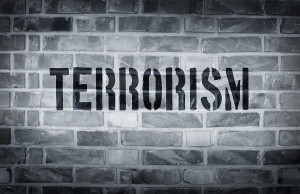

 The property/casualty industry must expand its terrorism-related cover to address a shift in how terrorist attacks are being conducted, a Guy Carpenter executive said.
The property/casualty industry must expand its terrorism-related cover to address a shift in how terrorist attacks are being conducted, a Guy Carpenter executive said.
Recent ISIS or ISIS-inspired attacks in Brussels, Paris and elsewhere had a multipronged effect of dividing communities, sowing fear, and causing widespread economic loss and disruption beyond the loss of life, Emma Karhan, managing director, Guy Carpenter, noted in commentary released as part of the reinsurance Rendez-Vous de Septembre in Monaco.
Future attacks of this scope mean insurers must broaden their role of supporting economies’ financial resilience in the wake of an attack, Karhan argued.
“The industry needs to look beyond what it currently deems the insured loss component of a terror-related attack and consider the wide reaching and longer-term financial fallout,” Karhan said. “The potentially extensive business interruption repercussions from these attacks are not being adequately covered by the market currently and this needs to be addressed.”
Karhan said that the November 2015 Paris attacks caused billions of dollars of potential financial losses to France’s GDP, and the post-Sept. 11 era in the United States “left thousands of small-and medium-sized companies fighting for their economic survival.”
“This is where the insurance industry needs to assume a more prominent role – providing immediate financial support to those businesses facing disruption and imminent closure,” she said.
This is possible, she said, by focusing on more precisely calculating “the financial impact, through a better understanding of the physical damaged caused and the subsequent business interruption and liability losses.” Guy Carpenter is among companies that has been working to develop better models that determine “damage radius and impact field” but also scenarios that reflect the potential impact of an event.
If insurers and reinsurers can hone their ability to offer expanded coverages, then industry and government would understand better how to divide their responsibilities in mitigating financial losses after a terror event, Karhan said.
“The role of [insurers and reinsurers] is designed to help mitigate economic disruption post loss, whether that be at the individual business or sector level,” Karhan said in her commentary. “Where the government-backed terror pool structures come to the fore is by providing significant financial defenses to withstand the large-scale shock events with the potential to destabilize economies.
Better understanding each side’s roles will offer a more efficient and effective response to terrorist threats longer-term, she added.
Source: Guy Carpenter